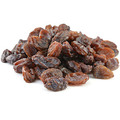Portraits of nature: autumn
In this seasonal series, in which writers describe a landscape familiar to them, Simon Armitage depicts the Yorkshire vale countryside in autumn

'I live in the Holme Valley on the eastern shoulder of the South Pennines in a hamlet composed of the outbuildings of an old dairy farm. I was born about five miles away, so in 50 years I haven’t moved very far. The post-industrial, old textile town of Huddersfield is only three or four miles north but completely hidden by Castle Hill, the local landmark that puts its finger to the wind, testing the weather. We have roughly an acre, which includes a young orchard and a pond; a large lawn runs, like a fairway, down the middle.
'When at home I’m usually in my study, hoping to write but sometimes just staring out of a big window behind my computer. The view here is quite unusual in its variety. A deciduous wood to the east, a cluster of houses to the south, fields and meadows to the west, and, beyond those, six or seven miles distant, the higher and darker border of Saddleworth Moor, the watershed that divides this pocket of Yorkshire from Derbyshire’s Peak District and the eastern fringes of Lancashire. The woods are the most obvious seasonal barometer; the leaves aren’t falling in September, but they’re beginning to rust around the edges, the sycamores dotted with tar spots, and gaps are starting to appear in the canopy. The estate that manages it planted a few hundred mixed saplings two summers ago on the valley side above the fishing dam, and from our house the rows of protective plastic tubes gave the distant appearance of a war cemetery. It was an uncanny omen; not long ago, the young ash trees were diagnosed with ash dieback, and the area is now out of bounds to dog-walkers and ramblers. The wood has only recently become a residence for new or returning species of birds, including buzzard and green woodpecker.
'Roe deer appear occasionally. By the end of summer they seem to be travelling further to forage and therefore must take more risks by crossing open land. Every year since we’ve lived here I’ve seen three together, but this autumn only the younger deer showed up. There’s a lot of shooting in these parts, so I assume the worst. The pheasants start to disappear around this time as well. They’re reared, then released into the wild, and it’s unusual not to see three or four in the garden during the day. One hen became so tame, it would almost take food from my hand. On other occasions they explode out of the bushes, the males like gaudy fireworks, and crash-land a couple of hundred yards away.
'I used to be a winter person – I enjoyed wearing heavy coats and breathing the cold air – but these days I crave the light, as if experiencing brightness were the great privilege of being alive. So I find it a little depressing when the nights start drawing in, even more so once the clocks have gone back. Mornings can be especially glum, a half-six start for the school run. The darkness of the wood is total by now, a blind spot, and the streetlamps and houselights off to the right begin to pinpoint a new geography. Once the sycamore tree in front of my study window has entirely disrobed, I’m much more conscious of the moorland horizon, and sensitive to any changes. Black Hill and Holme Moss are the two nearest peaks, and it’s possible for them to be tipped with snow by late October, especially if weather systems have swung in from the east. But usually they’re hidden beneath silvery low cloud. The brown hares on the moors are more apparent once the grass has started to thin out, and short-eared owls and barn owls fly low around the rocky summit of West Nab, along with the occasional herring gull.
'If the weather makes a late effort and we have one of those semi-mythical Indian summers that linger on into early autumn, however, the effect of afternoon sun on turning leaves is irresistible – not just browns but golds and reds and yellows and every shade between. The evenings are full of calmness and grace, the natural bowl of the woods becomes a glowing cauldron and there’s the last chance to sit outside with a drink and soak up the warmth before winter.
'Some of the fields around here are grazed by sheep, cattle and horses, others are used for crops and silage, so, after the harvest, the jigsaw of the landscape takes on a completely different set of colours. Back in our plot, everything is beginning to calm down. My wife’s the real gardener – I just do the fetching and carrying (in fact, if truth be told, she does most of that as well) – and once in a while she’ll offer a little tour, pointing out and identifying the more unusual plants for me. But I know a plum tree when I see one, especially when it’s almost doubled over with fat, dripping fruit, as it was two years ago – so many that by summer’s end we didn’t know what to do with them. An annual autumn event is the carrying of several pot plants into the garage for the winter. I like the scent of geraniums, they remind me of something I’ve never been able to identify and it’s always surprising and oddly satisfying to go looking for a tin of paint or a pair of shoes and to be hit by that peculiar smell.
'After the leaves have fallen, sound travels further, and for the first time in the year I’m conscious of a train pulling out of the unmanned station and the peal of the church clock.'
You might also like…
Explore the Yorkshire Dales National Park
The best places for an autumn break
Embrace autumn: more ways to enjoy the season










